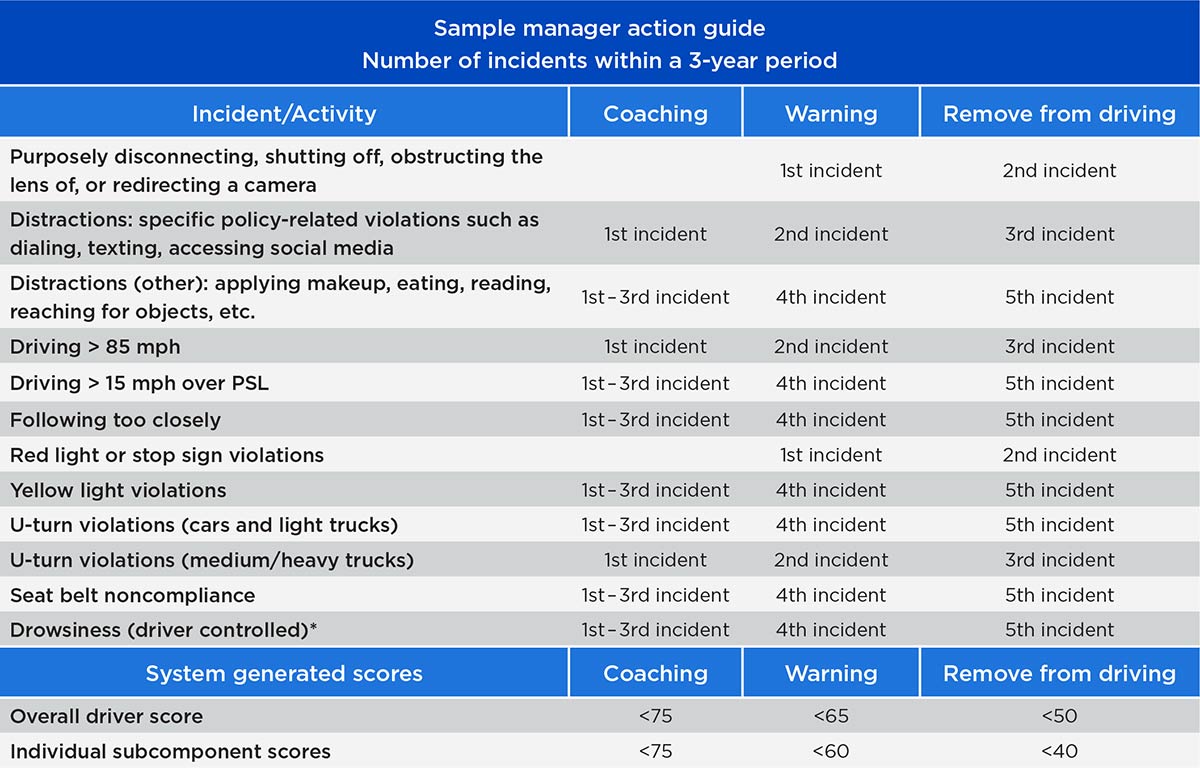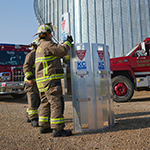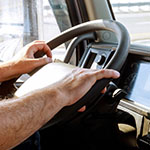Guidance for developing dash camera policies and procedures
Telematics-based dash camera systems are a significant investment for any organization. If implemented properly, these systems can be highly effective in reducing accident frequency and are essential to the accident investigation process.
Policies should be developed to guide supervisors and drivers on topics related to the system's use. These policies can be incorporated into existing policies, or an independent dash camera specific policy can be developed.
Elements to consider incorporating in your policy
Purpose statement
Outline why dash cameras are being used, as well as the benefits to the company and drivers.
Driver responsibilities
- A statement should explain the driver’s role in utilizing the system
- Drivers are to notify their supervisor if they learn the system is not working properly
- Drivers may not disrupt the normal operation of the system without supervisor approval, including:
- Shutting it off or disconnecting the power source
- Blocking or redirecting the lens(es)
- Removing the storage card
- Impeding the telematic transmission of data
- Drivers may not save, share, or post any video from the system without supervisor approval
- All data and video created by the system remains the sole property of the company
- Drivers are required to participate in meetings and coaching sessions related to unsafe driving identified by the system
Supervisor responsibilities
- A statement should explain the supervisor’s role in utilizing the system; the policy should outline:
- Training of inexperienced drivers
- Obtaining driver acknowledgment of rules/polices
- Addressing unsafe driving behavior and rewarding safe driving
- Handling driver issues or complaints
- How frequently the telematics data/dash camera portal should be reviewed
- How to respond to unsafe driving alerts, poor driver scores, etc.
How to use information for accident investigation (data and video)
- A statement should explain how each event will be used in relation to an accident
- Why and how to preserve evidence
- How to designate access to be specific individuals within your company, your insurance claims personnel and your legal counsel
- The importance of utilizing the data and video to determine causal factors in a crash, as well as how it can be used for post-accident driver counseling and retraining
Managing unsafe driving
- How information obtained from the system will be used to manage drivers
- Guidelines for consistent treatment of unsafe driving:
- When supervisors are required to act and what action should be taken (coaching/ training, warning, formal disciplinary action)
- The means to identify/measure unsafe driving by:
- Driver scores, which depict driver behavior over a period of time
- Alerts, which identify policy violations and intentional careless driving where one incident would trigger management action (e.g., driving 15 mph over the speed limit, texting and running red lights)
A sample supervisor action guide is below. When creating your own, keep the following points in mind:
- All telematics systems are different, so adjustments should be made based on experience with the system
- The vendor typically has action criteria based on its scoring model
- A time component (e.g., over a 3-year period) should be included
- Incidents with your Motor Vehicle Record criteria should be compared and referenced

Trending now
Need help? Email us or call us at 800-260-1356.

 >
>

 >
>
 >
>